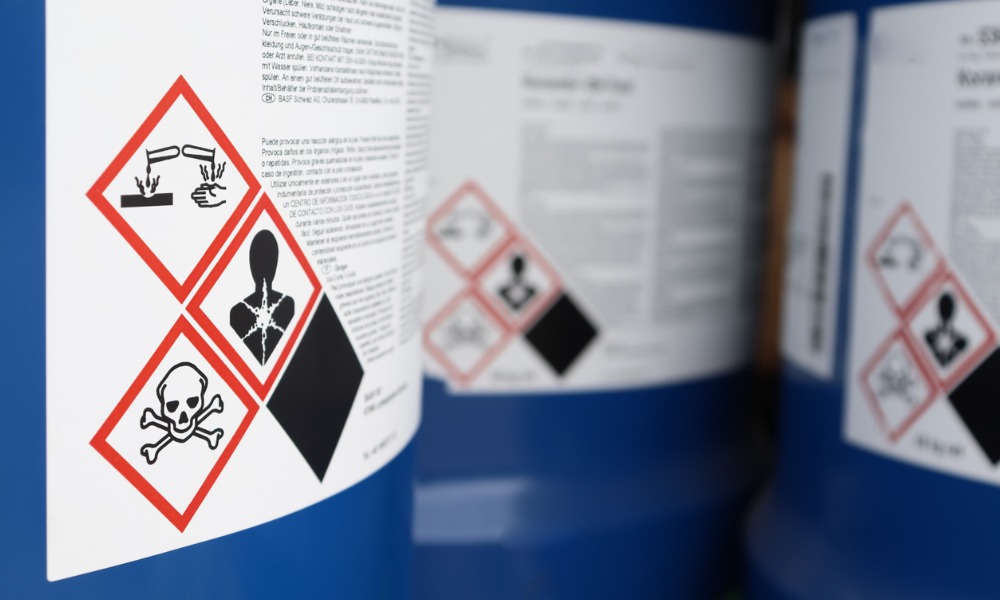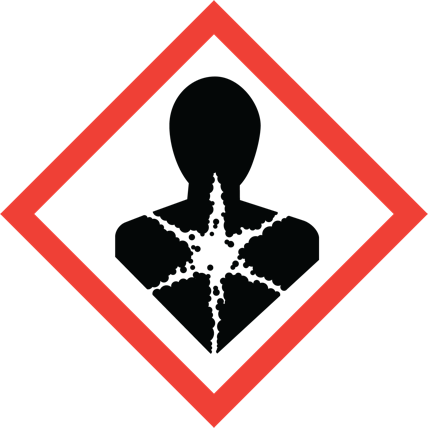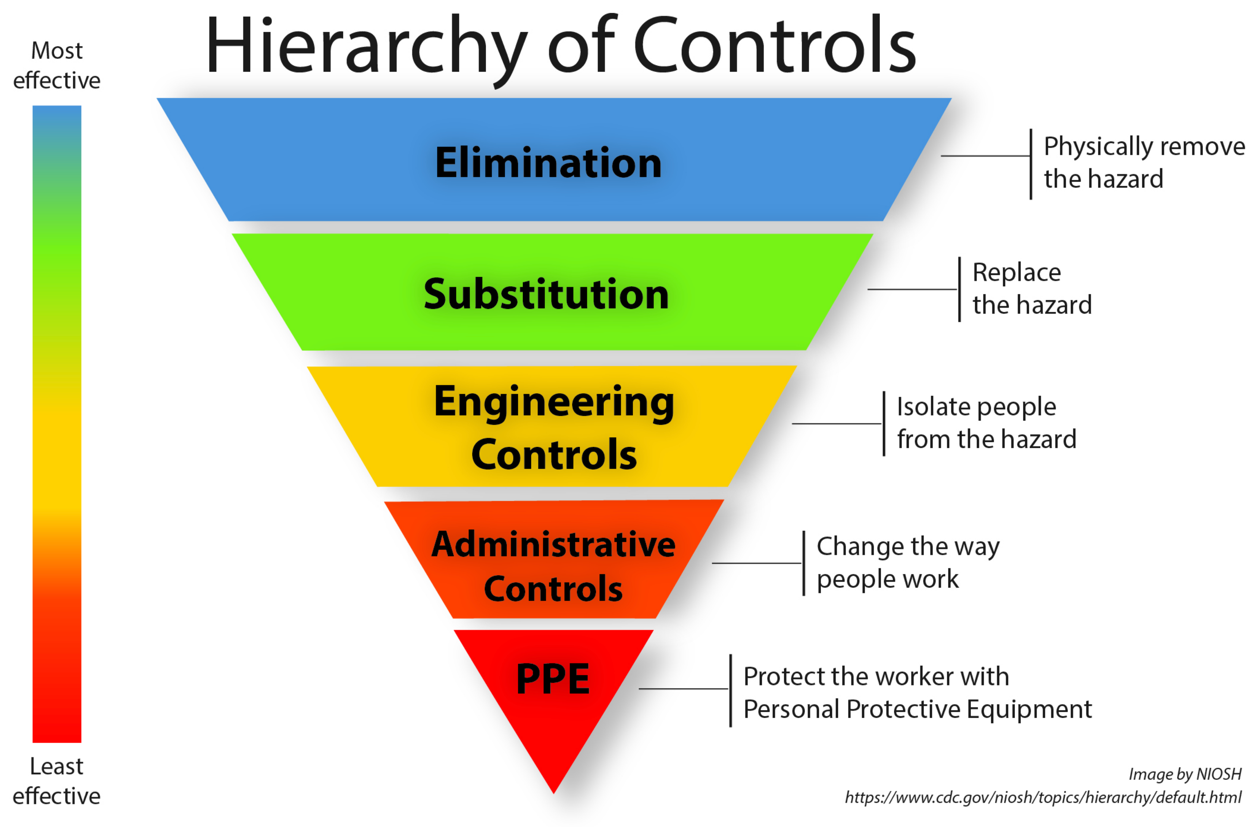Managing the effects of workplace chemicals on reproductive and sexual health


Toxic chemical exposures from common products like paint and solvents in the workplace can have serious effects on reproductive and sexual health for both men and women – and their children.
What are reproductive hazards?
While reprotoxic chemical products are used in every workplace, awareness and the application of sound chemical management practices can enable their safe use while protecting workers — and their families — from harmful exposures.
In men, workplace exposures to reprotoxic chemicals can impact:
- Hormones levels
- Sperm quality, count, shape, genetics (DNA) and capabilities
- Sex drive
- Erectile dysfunction
In women, workplace exposures to reprotoxic chemicals can impact:
- Menstrual cycles
- Sex hormone production
- Ability to become pregnant
- Health of the unborn child
- Health of breastfed children
“Reproductive hazards are substances that affect the ability to have healthy children,” the National Institute for Occupational Safety and Health (NIOSH) explains. Other examples of reproductive hazards include radiation, pesticides, drugs, cigarettes, and heat.
According to NIOSH, “Scientists are just beginning to understand how reproductive hazards affect the male reproductive system. Although more than 1,000 workplace chemicals have been shown to have reproductive effects on animals, most have not been studied in humans.” The Chemical Abstract Service has registered over 200 million unique chemicals substances. Most of these have never been assessed for reproductive toxicity.
Furthermore, family members can be affected by ‘Take-Home Exposures’ — when substances arrive in the home on your skin, hair, clothes, shoes or even your phone or toolbox.
Examples of common reproductive toxicants that Rillea Technologies sees in workplaces, through SDS RiskAssist, include drugs, stainless steel cleaners, paints, adhesives, lubricants, fuel, epoxy, degreasers, sealants, oven cleaners, corrosion inhibitors, water treatment chemicals, coolants, and lacquers.
Understanding occupational exposure limits
You have likely heard the term “the dose makes the poison,” a basic principle of toxicology attributed to the Swiss physician Paracelsus in the 16th century. Indeed, toxic chemical products are used in every workplace, and they can be quite useful and safe, if we manage the dose and put appropriate safeguards in place.
WHMIS safety data sheets (SDSs) identify chemical products that may cause harm to people and the planet. They are also the key to understanding what is required to protect individuals handling the product and how to control exposure levels.
Chemical products that cause harm to reproductive organs, fertility or the unborn child will have one or more of the following WHMIS hazard statements in their SDSs:
- May cause genetic defects
- May damage fertility or the unborn child
- Suspected of causing genetic defects
- Suspected of damaging fertility or the unborn child
The WHMIS pictogram associated with these hazards is the Health Pictogram.

Chemical products that can harm a breast-fed child will have the following WHMIS hazard statement but no associated pictogram:
- May cause harm to breast-fed children
Once you know that a product can cause harm, it's important to raise your concerns with your employer. If the product has not already been evaluated, your employer may review Section 8 of the SDS – Exposure Controls/Personal Protection. Here you may find information on the occupational exposure limit (OEL) for the ingredients that the product contains. The OEL is defined as an average airborne concentration of a hazardous substances (the dose) at or below which a worker, exposed for a specified length of time, would not likely experience health effects. Note, however, that per The National Institute for Occupational Safety and Health (NIOSH), “Current occupational exposure limits were set based on studies of non-pregnant adults. What is considered safe for you, may not be safe for your fetus.”
OELs for hazardous substances can be published with up to three standard time periods as defined in Ontario Regulation 833:
- Time Weighted Average (TWA) is the average airborne concentration (the dose) to which a worker may be exposed in a workday or a work week.
- Short Term Exposure Limit (STEL) is the dose to which a worker may be exposed, without experiencing harm, for a 15-minute period, no more than four times per eight-hour shift with at least one hour between exposures.
- “Ceiling” (C ) is the maximum dose to which a worker may be exposed at any point in time.
While your SDS is a great place to start, not every SDS will contain the OELs for your jurisdiction. That means you need to review the legislation for your location. SDS RiskAssist software makes this easy: our free, web-based Occupational Exposure Limits tool allows you to upload an SDS and immediately see whether it contains ingredients with occupational exposure limits associated with the product in your province.
Evaluating occupational exposures
Very low occupational exposure limits for an ingredient in a chemical product indicates that it may be harmful in even very small, undetectable quantities. In this case, ensure you and your employer discuss the use of the product with industrial hygiene experts.
Once you know the occupational exposure limits for chemical products in your workplace, there are several factors involved in controlling exposures; in essence, managing the dose that makes the poison. This includes understanding and evaluating the following factors:
How much of the product is needed?
Is a worker using a dab of glue or litres of floor sealant for a large surface area? While both can still be harmful, it is easy to move the gluing work to a well-ventilated area for a short period of time.
What type of product is it and how is the product applied? (I.e., aerosols versus fine powders versus liquids)
Aerosols and fine powders can become finely dispersed droplets/particles (1 to 120 µm3) in the air around us and are easily inhaled – even when we can’t see them. Likewise, liquids that are spread over large surfaces, such as floor sealants, can release large amounts of easily inhalable vapour as they dry. Note that the occupational exposure limits for some chemicals are lower than their odour threshold meaning that your body cannot detect the presence of a chemical.
Under what conditions is the product used (e.g., type of ventilation)?
Normal room/office ventilation is not designed to vent large amounts of aerosols or vapour that is being released in the room. A fume hood, on the other hand, is intended to provide high levels of ventilation to dilute and minimize exposure to harmful substances. Learn how to pick the best fume hoods for hazardous worksites here.
For how long and how often is the product used (repeated exposure)?
The length of time and frequency of the exposure is another important consideration. Is the product used hourly by a worker, such as a disinfectant for cleaning staff, or is it used infrequently, such as a product used for an unusual repair job? The length of time a worker may be exposed, perhaps repeatedly, will impact decisions on whether permanent or temporary control measures are required.
Is the individual subject to other hazardous exposures?
Also consider total hazardous exposures for individual workers. For example, mechanics, cleaners, and estheticians may have exposures to various products over the course of an eight-hour day.
What about the health of the worker?
An individual's personal health must also be considered as this can affect how they react to the exposure. Factors like pregnancy, age, lung health, medications, and previously existing conditions can all affect how someone’s body reacts to and processes the exposure.
Exposure mitigation
To control reprotoxic risks, first consider eliminating or substituting high-risk products. Decide which products are business-critical and which ones are not. Next, search for safer substitutes for your business-critical products. For example, can you find a stainless-steel cleaner that does the job but is less harmful to your employees?

When it comes to harmful chemicals, workers can be exposed in three ways: through inhalation, skin exposure or by accidentally swallowing (ingestion) the product.
If the harmful products cannot be eliminated or substituted, employers can reduce the risk of harm through the use of engineering controls, administrative controls and PPE. Examples of each by route of entry include:
- Inhalation – improve ventilation, install filtration, limit time spent using the chemicals, require use of personal protective equipment (PPE)
- Skin exposure – put guards or barriers between product and people, proper decanting or dispensing equipment, PPE.
- Ingestion – hand wash stations and identified eating areas, labeling, manageable container sizes, hygiene training, and ease of access to disposable gloves.
- In all cases people must be properly trained on the identification of the hazards and use of the above control measures.
Additional information on air quality
The air we breathe is highly important to human health: Humans consume about 1.5 to 2 kg of food per day, 4 to 5 kg of fluids per day and 12 to 14 kg of air per day.
Air quality at work is dependent on the clean air delivery rate (CADR) through ventilation systems. The American Society of Heating, Refrigerating and Air-Conditioning Engineers (ASHRAE), has just released Standard 241, Control of Infectious Diseases. This standard is also very promising to help reduce exposure to other disease-causing agents such as workplace chemicals and can be reviewed to learn more about how to evaluate ventilation and indoor air quality.
Canada's first Occupational Exposure Registry in development
Occupational disease, including reproductive harm, is so costly to society that the Government of Ontario has announced plans to develop an Occupational Exposure Registry in an effort to prevent occupational illnesses. The registry, set to launch in 2025, will track harmful exposure levels, help diagnose workplace diseases faster, improve worker compensation, and reduce costs to the healthcare system.
Workplace safety is a team effort
The health impacts of chemical exposures on fertility and sexual health are not always immediately apparent and may take years to develop. Occupational health and safety laws that protect workers from hazards require employers to identify hazards, understand what exposure levels may cause harm and put safety procedures in place to protect employees. Finally, employees must have access to up-to-date safety data sheets and clear workplace training on handling toxic chemicals according to the latest best practices and safety standards to protect themselves and their families.





